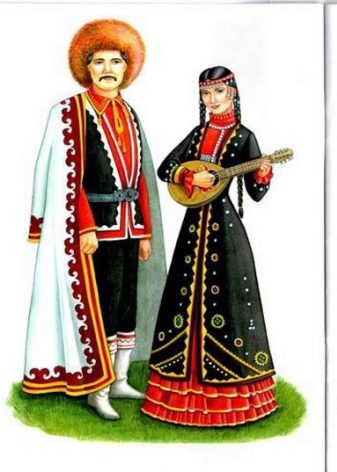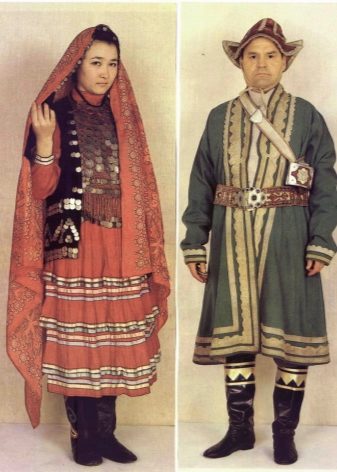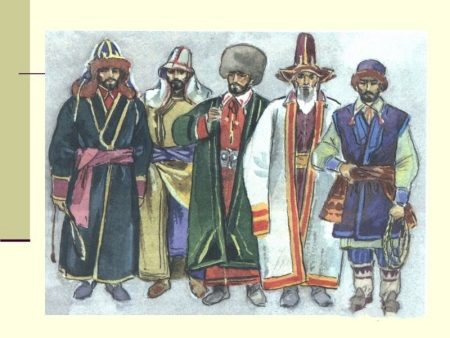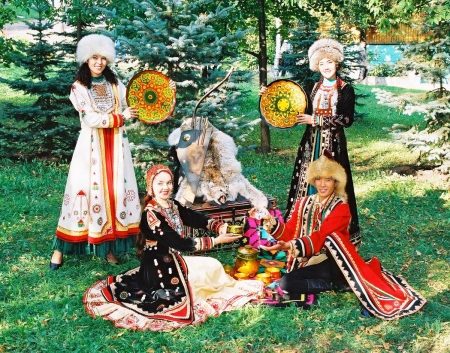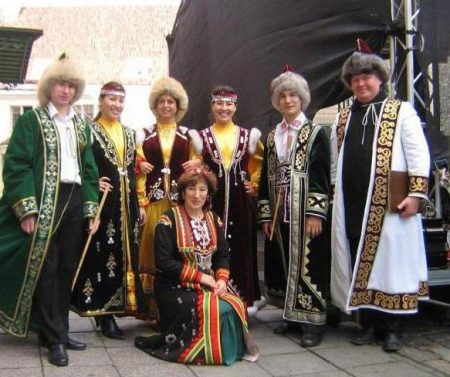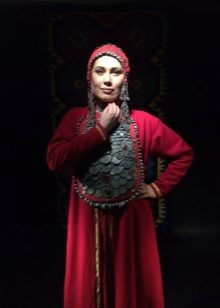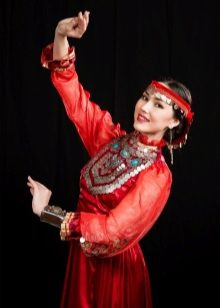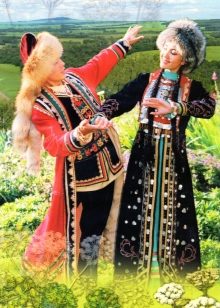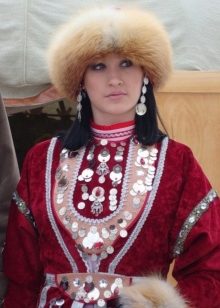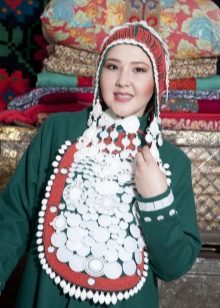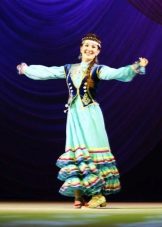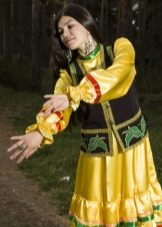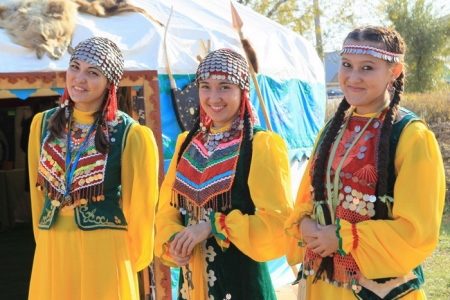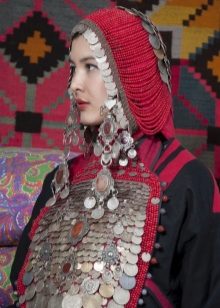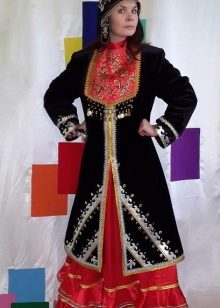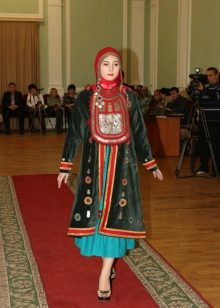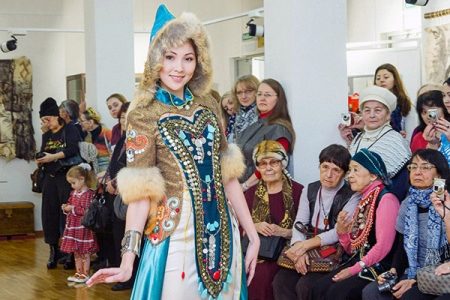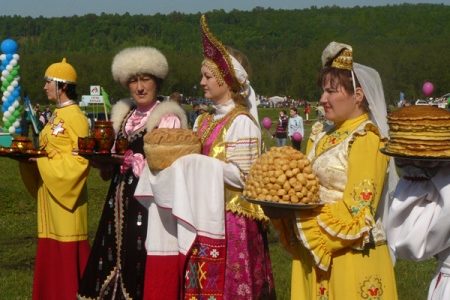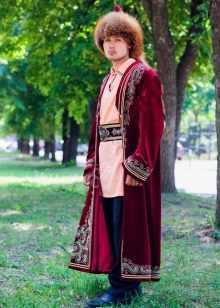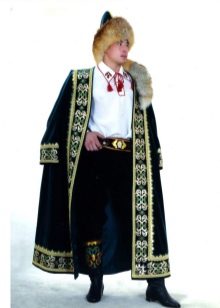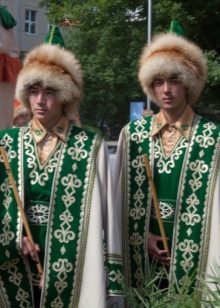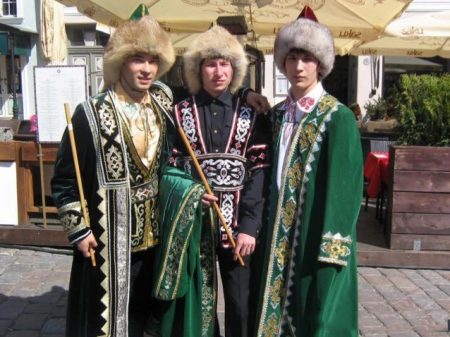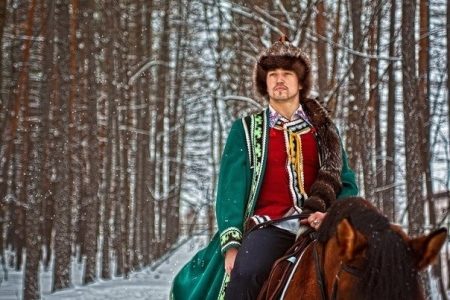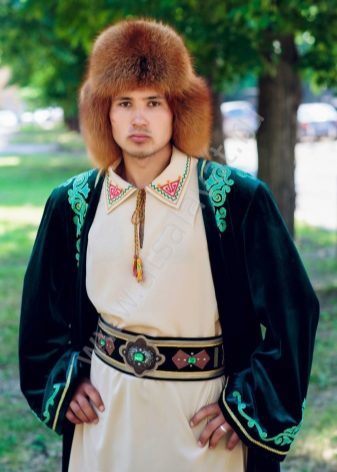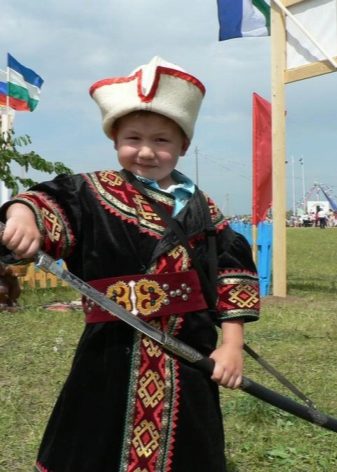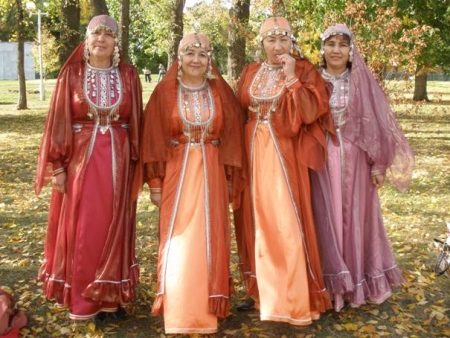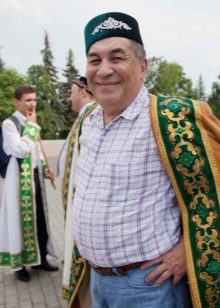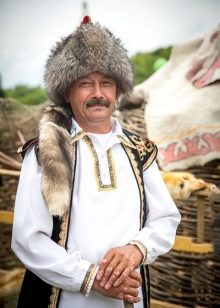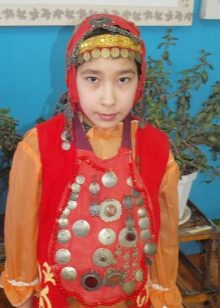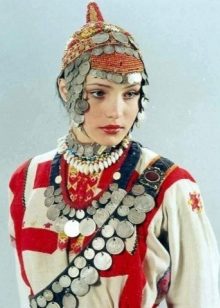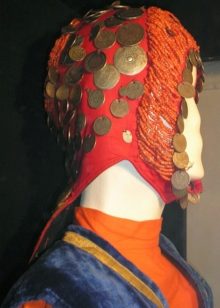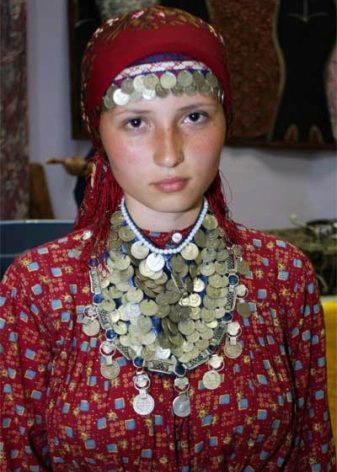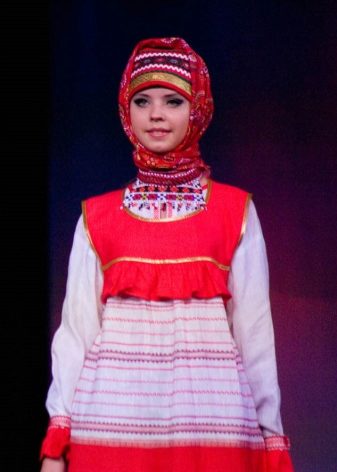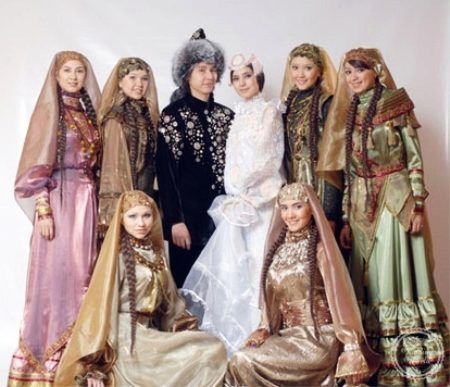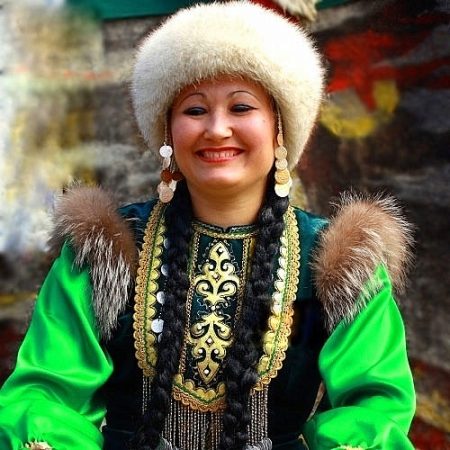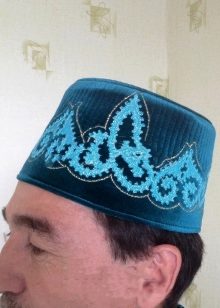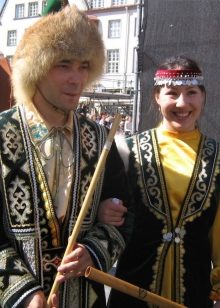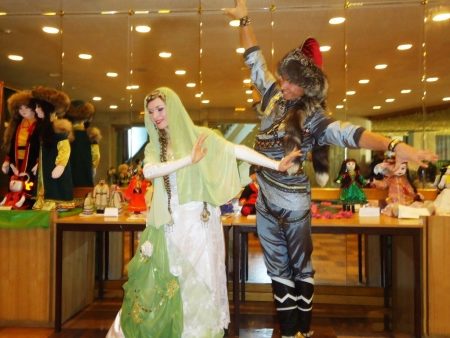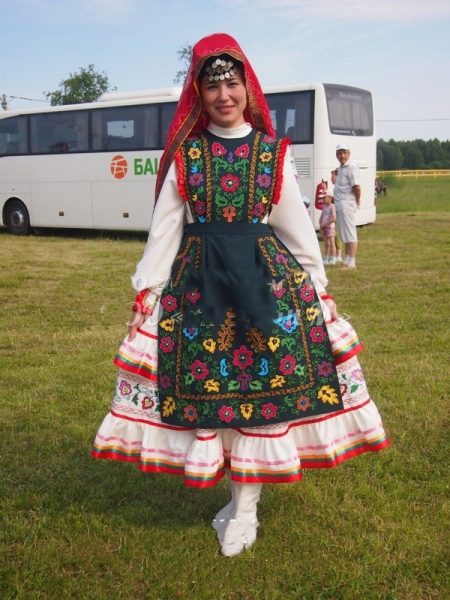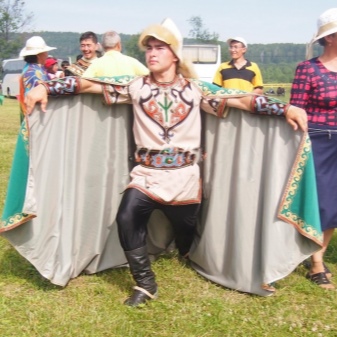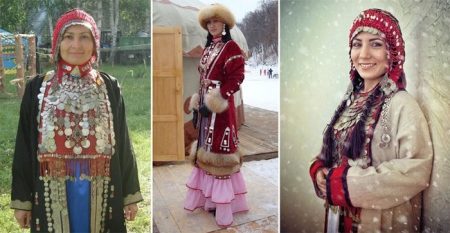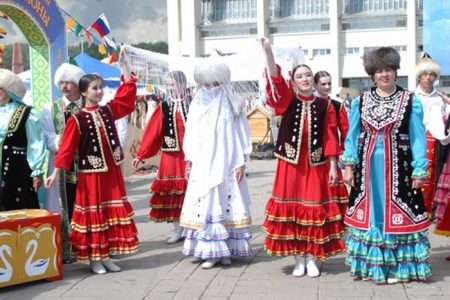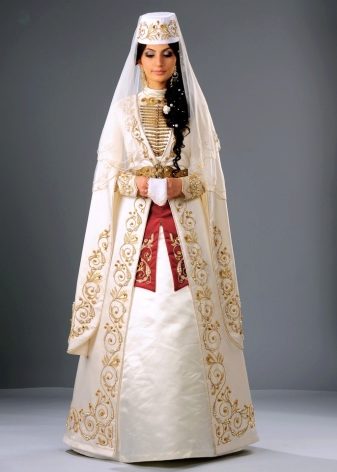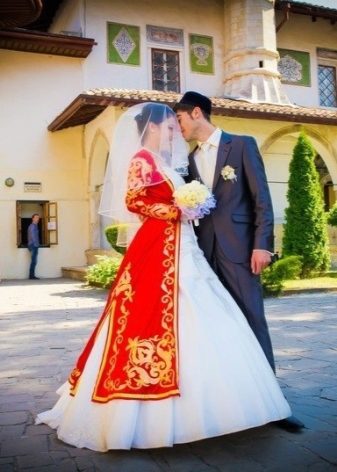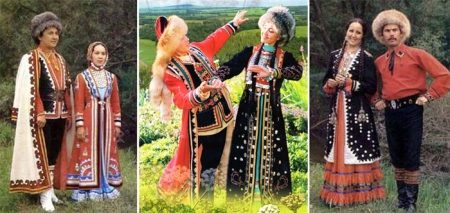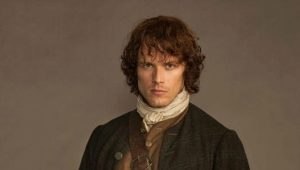Bashkir national costume
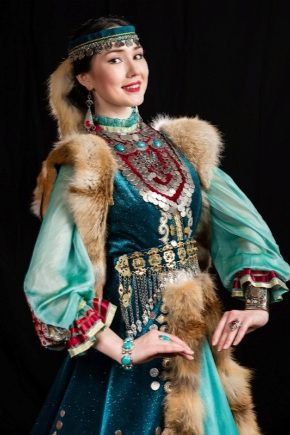
A bit of history
The habitat of the Bashkir people is very extensive. In connection with this, a difference in culture was formed. This was influenced by the habitat of the people and directly the natural area in which it was located. So, for example, in one area cattle breeding was the main activity, in the other farming, and in the third, skillful skills. All this is combined and united in the Bashkir folk costume. High skill contributed to the integration of parts in a complex ensemble, which is based on deep historical traditions.
It is known that there are seven variations of the national costume of the Bashkirs: the northwestern Bashkir, the northeastern, southwestern, southeastern, central, eastern and Bashkir Samara-Irgiz settlements. The thing is in the habitats of the people, each costume characterizes a separate region.
Features
A characteristic feature of the suit was its layering. Regardless of the weather conditions, the Bashkirs put several layers of the top under the underwear. Especially in such dresses were on national holidays.
One of the special outfits of the Bashkirs was outerwear called Kazakin. It was a fitted suit with lining with the presence of sleeves, fastened with a button closure. The uniqueness is that both men and women wore such a product. Yes, even used as clothing soldiers.
- Colors and shades. Traditionally, natural shades are used in the creation of folk Bashkir costumes. The main colors are blue, black, green, red, brown and yellow. Other shades are also used, but as a rule, they are intended not for casual wear, but for festive costumes.
- Fabric and cut. The clothes of the Bashkir people were created with the aim of preserving heat in winter and comfort in summer. Even for religious reasons, Bashkirs cannot afford to wear open clothes. Therefore, the national costume has a free cut. Usually it is a long, tight bathrobes, loose pants and shirts. When choosing fabrics, preference is given to silk, velvet, satin. The decoration uses leather, fur, various beads, coins and embroidery.
Description of species
- Woman suit. The national women's costume has been forming for decades and continues to acquire changes to this day. A distinctive feature of such clothes is wealth and luxury.
The main subject of the Bashkir woman’s wardrobe was a dress bearing the name kuldek. Decorated such a product with embroideries and patterns of fabric. Wide cuts, false crotches, string on the chest and a turn-down collar - all this is characterized by the kuldek. At the beginning of the twentieth century, this outfit underwent changes, such as a lapel and tucks on the chest.
On the neck over the dress, the women put on a breastplate. It was believed that such an attribute serves as a talisman from evil spirits.
It was customary to wear a dress under the dress (original trousers), and on the top, decorated with silver coins, a camisole. It was decorated in various ways, everything depended on the region.
Another element of the festive attire was the apron, called alkyapys. Initially, this woman's apron was worn at the hour of doing household chores, but over time it was modified and supplemented with festive decoration.
Very well-known were the dressing gowns. In the north, this product was called bishmet, in the south - elen. They performed such dressing gowns of monophonic cloth and were decorated with coins.Both products are very similar in their cut, but there is a difference: the hem of the flared helen, and the product itself is longer than the beshmet.
- Men's suit. National men's suit is not so diverse and more restrained in execution. Usually the image included a loose shirt, resembling a tunic, narrow pants and a light robe or jacket. Depending on the region, there were two types of shirts for men. The first, referring to the south, had a cut that sloped down, was fastened with a cord, and was distinguished by the absence of a collar. The second, belonging to the north, had a collar, and the cut line was straight.
As outerwear, men wore cloths, check dressings, robes in dark colors, and a Kaseki caftan, which had a flared cut, a stand-up collar, and a blind buckle. The quality of the fabric could determine the level of consistency of the Bashkir. For example, low-income men wore a robe from the material of the woven house.
In winter, Bashkir men dressed in sheep and sheepskin fur coats.
Only the male element of clothing was a belt. They were made of several types: from wool, fabric, belt and sash with a buckle. In case of a holiday there was a separate belt of camar. He was distinguished by the presence of jewelry buckles and patterned embroidery.
- Baby suit. The national costume for the girl reflects the characteristics in the clothes of this nation. It can be presented in the following form: kuldek skirt, kezaki sleeveless top and veil headdress - for girls over 10 years old.
The ensemble for the boy repeats the national clothes of the Bashkir men. A lacing shirt, trousers, a belt with a gold pattern - all this characterizes the image of a Bashkir boy.
Accessories and decorations
Bibs, dorsum pads, various pendants, bracelets and earrings were used as jewelry and accessories. Such products were made with the help of coins, embroidery, metal plates, beads, shells, and in the last millennia corals were actively used.
Outerwear is often decorated with applications. Along the edges of the products could be embroidered with a tape of red or gold color. It gave along special chic.
Another important point of the costume is the headdress. He could tell about the welfare of the owner, about the age of the woman, and embroidered stones served as a talisman.
Women's hats were presented in a large assortment, and their decoration reflected the national color. The wives of wealthy men could afford a rich headdress, called kashmau. This accessory was presented in the form of a cap with the presence of a hole at the crown. They embroidered the product with corals, beads and pendants. A long ribbon that goes down onto the back endowed the cap with individuality and beauty - the ribbon was embroidered with beads and attached to the fringe.
There was another type of headdress for a married woman - kelepush. It was a high hat, a cape was attached to it, which covered the ears and fell on the shoulders. They decorated the product, as well as Kashmau, beads and corals.
The girls walked without covering their heads, after the age of ten years they put a headscarf or a skullcap on their heads.
Young women used caps as a headdress. Made them from a cardboard, birch bark or skin. Brushes were attached to the cap, worn, shifted to the side. From above put on a scarf.
Aged women wore a headdress of the Tatars, wearing a fur hat on him.
Men's hats did not differ in such diversity as women's. Allocated skullcap and fur cap. Men of the Muslim faith should not appear in society with their heads uncovered. Proceeding from these motives, boys at an early age began to wear a hat.
Older men wore dark shades, young - light.
Festive attire of men, to give solemnity along, sheathed beads.
Footwear
Women's shoes were decorated with tassels.In not cold times they wore bast shoes (sabata), under them certainly had to wear hosiery. Hosiery made of various materials (wool, cloth). Separately in the wardrobe there were festive stockings embroidered with patterns and overlays.
Stockings were worn and men, but could replace them with foot wrappers. The shoes were shoes and itk and saryk. Ichigi was a festive version of boots, they were wearing galoshes. Upon entering the premises, galoshes were removed, remaining in boots.
The beauty of the wedding dress
For the Bashkir wedding prepared carefully and in advance. The clothes that served as wedding dresses for young people could be worn after the wedding on special holidays. For tailoring of clothes, women were chosen who are well mastered the art of embroidery, applique and patterned weaving.
The holiday was bright and intense. The bright colors of colorful women's dresses with various ribbons, fluffy skirts, patterns and frills made the holiday colorful and interesting. Colors played an important role in wedding dresses. Red served as a symbol of home. The red and white dress of the bride symbolized the sun, warmth and comfort. Along the edges of the dress embroidered ornament - patterns, curls, spirals. Bathrobes and camisoles were worn over the dresses.
On the bride's neck they wore a chest ornament embroidered with stones and coins. The wealth of these ornaments could be judged on the security of the family.
The feet of the bride were decorated with white boots, made of fine goat leather.
The head of the bride was covered with a thin handkerchief embroidered around the edges.
For the groom, the wedding shirt should have been embroidered by the bride with her own hands and presented to the chosen one before the celebration. For this used red cloth. A sleeveless jacket was worn over the shirt.
Pants, loose fitting, skullcap and belt complement the image. They, like the shirt was preparing the bride.
The groom also used white boots made of thin leather as footwear.
